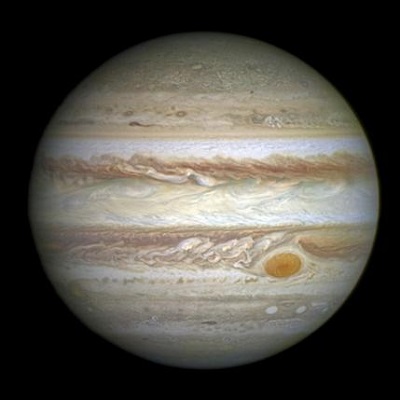Scientists have long wondered why Jupiter’s upper atmosphere has temperatures similar to those of Earth, even though the biggest planet in the solar system is five times farther away from the sun.
The answer may be The Great Red Spot, an enormous storm big enough to swallow three Earths that has been raging on Jupiter for at least three centuries, a study showed, according to Reuters.
Using an infrared telescope at Hawaii’s Mauna Kea Observatory, scientists discovered that the upper atmosphere above the Great Red Spot – the largest storm in the solar system – is hundreds of degrees hotter than anywhere else on the planet.
It could be a coincidence or a major clue, said Boston University physicist James O’Donoghue, lead scientist of the study published in the journal Nature.
The storm spans 13,670 miles by 7,456 miles and is located in Jupiter’s lower atmosphere. The top of its clouds reach altitudes of about 31 miles.
The finding provides a strong link between Jupiter’s upper and lower atmosphere, though the exact process by which heat is transferred remains unknown. The most-likely energy source is acoustic waves that provide heat from below, the study said.
Scientists also are unsure why the storm is brick red, nor why it has changed color over time. In a 1900 report in the Seattle Post-Intelligencer, scientists described the oval storm as salmon pink. Recent images from the Hubble Space Telescope show it has become orange tinged and more circular.
Like a hurricane on Earth, the Spot’s center is relatively calm, but farther out winds reach 270 mph to 425 mph. Because there is no land on Jupiter, which is made almost entirely of hydrogen and helium, the storm can never make landfall and dissipate.
“The Great Red Spot is like a wheel that’s wedged between two conveyor belts running in opposite directions,” said planetary scientist Glenn Orton, with NASA’s Jet Propulsion Laboratory in Pasadena, Calif.
“One is adding momentum to it at the top, and another is adding momentum at the bottom. Together, they feed the vortex and essentially keep it alive.”
But the storm may not be alive much longer. It has been shrinking for the last 100 years, Orton said.
H.Z

